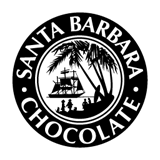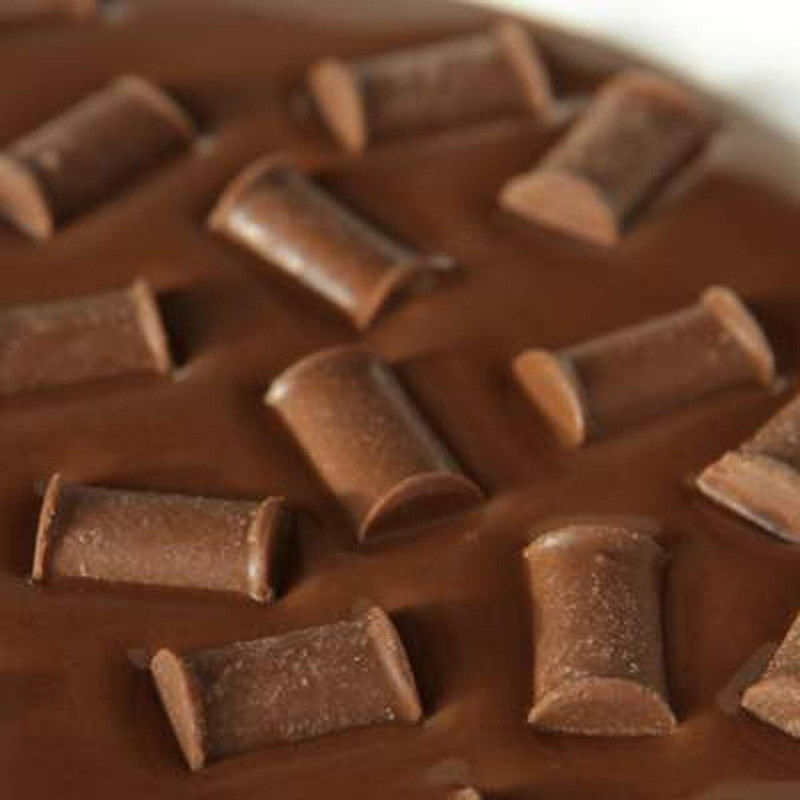Milk chocolate is probably the most popular kind of chocolate in the entire world. Striking a perfect balance between the bitterness of dark chocolate and the overwhelming sweetness of its white counterpart, it is beloved by adults and children alike. There are quite literally thousands of ways to prepare milk chocolate, and although the tablet format will likely never be beaten in terms of popularity, you would be doing yourself a disservice by not venturing out to explore this vast, flavorful world.
Most milky chocolate available on store shelves nowadays is so heavily processed that it loses all of its authenticity. The flavor of the unique cocoa beans that were used to create it drowns in the sea of preservatives, colorings and other additives designed to make the tablet appeal to the lowest common denominator. If you’re a true chocolate lover, you should keep away from the mainstream chocolate brands and opt to stick with gourmet chocolate providers.
Couverture chocolate is one of the highest-quality experiences originating from cocoa beans. It can be prepared and consumed in a wide variety of ways. Extremely popular with bakers due to its pungent aroma and flavor, it can also be made into tablets, as well as served as a dessert topping. If you love chocolate and would like to take your sweet tooth to the next level, couverture milk chocolate is definitely the way to go. In this article, you’ll learn all there is to know about it: how exactly it differs from compound chocolate, where you can get it, and how to tell the difference between good and bad milk chocolate.
What Is Milk Chocolate Couverture?
Although it isn’t usually associated with couverture, milk chocolate definitely does exist in that form, and it is miles better in flavor than your plain old compound milk chocolate. Before getting into the details of milk couverture chocolate, however, it’s important to understand what couverture chocolate actually is, and how it is different from its compound counterpart.
Compound Chocolate
The crux of the matter lies in the percentage of cocoa butter and solids used in the process of creating it. Couverture chocolate contains a much higher percentage of these ingredients, which is simply why it tastes so much better than compound chocolate. The tablets you’re used to seeing on the major supermarket shelves are often compound chocolate products, laced with all sorts of different additives that are much cheaper to utilize in the production process than cocoa butter. These additives include ungodly amounts of sugar, fillers, PGPR, vegetable fats not related to cacao butter like palm, chemical preservatives, and artificial flavoring.
Don’t get us wrong! You can absolutely find high-quality compound gourmet chocolate (don’t expect it to have a familiar brand label, though). In fact, there are instances where compound is much more useful than couverture, for example when it comes to making molded chocolates. It is also a little more stable in warmer conditions.
Couverture Chocolate
As opposed to compound, couverture chocolate is a little bit more expensive and time-consuming to make. Aside from a much higher percentage of cocoa butter, it also contains chocolate liquor and requires additional tempering before it can be usable. Without the tempering, it runs the risk of blooming, which is a term used to describe the appearance of thin, white coating on the chocolate’s surface due to warm temperature exposure. In order to qualify as couverture, the chocolate has to contain at least 35% of cocoa solids and 31% of cocoa butter.
How to tell the difference between couverture and compound while eating chocolate? The first thing you should look out for is the texture, which is much firmer. Another thing is the characteristic “snap” you’ll feel (and most likely hear) when breaking it up. Finally, although it pertains more to dark than milk chocolate, couverture will have a much creamier, more mellow flavor.
How to Choose the Best Milk Chocolate
It may seem a bit counterintuitive, but the truth is that the very best milk chocolate brands are not the ones you’re used to seeing advertised on a regular basis. There is no need to start listing out any specific names, but you surely know what brands we’re referring to. Their chocolate, while certainly capable of satisfying your sweet tooth, has no real qualities that make great chocolate truly great. Their sweet and creamy flavor is more due to the overwhelming amount of sugar put into it, rather than actual dairy. While there is nothing wrong with indulging in them every now and then, they are nowhere near the quality of the best couverture chocolates.
The requirements for milk couverture chocolate are slightly different than in the case of its dark counterpart. It “only” needs to contain at least 25% of dry cocoa solids and the same amount of cocoa butter (31%). The difference, of course, stems from the fact that a significant portion of the ingredients will consist of milk powder.
Aside from specialty chocolate stores, most brick-and-mortar locations won’t have the milk couverture chocolate you’re looking for. We recommend taking a look online and shopping directly from chocolate brands. That way, not only will you be getting your chocolate straight from the source, but you’ll support professionals who are extremely passionate and devoted to their trade.
Milk Chocolate’s History and Where It Came From
The history of couverture is intertwined with the history of chocolate in general -- after all, in the very beginning, all chocolate was couverture. The compound alternative is a relatively recent invention, meant to streamline the chocolate production process and make storage of these delicacies easier and more efficient.
The origins of chocolate reach back thousands of years. Most historians agree that the Mayan civilization was the first one to popularize the drink within its borders -- some sources claim that it has been drunk with every meal, often with the addition of chilli peppers or honey.
Once chocolate made its way to Europe, it was pretty much only enjoyed as a hot beverage, and much like in the case of coffee, some people added milk to it in order to mellow out the intensity of the drink. This is why it’s quite difficult to pinpoint the origin of combining cocoa beans and milk.
The first chocolate bar (or tablet) was created in 1847 by J.S. Fry, a well-known British chocolate maker. It wasn’t until 1876 that a Swiss chocolate virtuoso, Daniel Peter, came up with the simple, yet brilliant idea of adding milk powder to his chocolate bars, effectively creating the very first milk chocolate in a solid form. Peter was also one of the co-founders of Nestle, the company responsible for popularizing chocolate bars amongst the masses.
The Bottom Line
The rare milk chocolate couverture is just one of the many delicious choices that are available on our website. Stop by and find out for yourself! The world of chocolate is so vast and complex that you really shouldn’t limit yourself to what you can easily find in your local supermarket. Especially if you consider yourself to be a true chocolate fanatic! People often get accustomed to the flavor of store-bought chocolate and give up on their search for the very best dessert around. Thankfully, in the age of booming e-commerce, buying couverture chocolate in bulk can be done in a matter of minutes!

